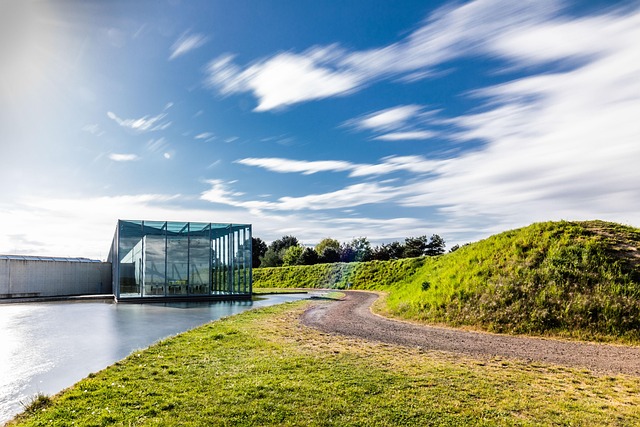Foundation leveling addresses structural issues caused by factors like soil settlement and shifting ground, ensuring stability for properties, especially older homes. Understanding foundation solutions is crucial for maintaining property value and integrity. Techniques range from simple adjustments to complex repairs, with professionals using advanced technologies for accurate diagnosis. The ultimate goal is to restore stability, prevent damage, ensure safety, and comfort. Budgeting for foundation leveling considers problem severity, property size, and chosen methods like piering or underpinning, with experts suggesting allocating a buffer for unexpected expenses. Investing in quality foundation solutions prevents costly repairs, mitigates structural issues, preserves property value, and ensures long-term comfort.
“Unlevel foundations can pose serious issues for any home. This comprehensive guide delves into the intricacies of residential foundation leveling, equipping homeowners with essential knowledge. We explore the basic concepts and common causes behind foundation unlevelness. From advanced solutions to non-invasive techniques, we offer a range of effective foundation repairs. Additionally, we address cost considerations and highlight the long-term benefits of investing in stable foundations. Discover expert advice on choosing the best foundation solutions for your home.”
Understanding Foundation Leveling: The Basics

Foundation leveling is a process aimed at addressing uneven or settled foundations, which can be caused by various factors such as soil settlement, poor initial construction, or shifting ground conditions. It involves correcting the alignment and level of structures supported by foundations to ensure stability and longevity. This technique is particularly crucial for older homes or buildings that may have experienced foundation movement over time, leading to structural issues and potential safety hazards.
Understanding the basics of foundation leveling is essential when considering any property’s long-term value and integrity. Foundation solutions can range from simple adjustments to complex repairs, depending on the severity of the problem. Professional inspectors and contractors use advanced technologies to diagnose the issue, whether it’s a matter of lowering raised foundations or raising settled ones. The goal is to restore the structure’s stability, prevent further damage, and ensure the safety and comfort of those living or working within.
Common Causes of Foundation Unlevelness

Foundation unlevelness, also known as foundation settling or sinking, is a prevalent issue in many residential areas, leading homeowners to seek effective foundation solutions. Several common causes contribute to this problem. One of the primary factors is soil conditions; expansive clay soils, for instance, can contract and expand with moisture changes, exerting pressure on structures and causing foundations to shift. Poorly compacted or unstable soil during construction is another significant culprit. Over time, heavy loads on the structure, such as from additional flooring or renovations, can also lead to foundation unlevelness.
Moreover, tree roots seeking water can disrupt soil stability, particularly near trees that have been in place for years. Natural disasters like earthquakes and floods can cause substantial damage, resulting in foundation settling. In some cases, improper drainage systems or nearby construction activities might contribute to the problem by altering the natural flow of water, leading to increased soil pressure on foundations. Understanding these causes is crucial when exploring foundation solutions to ensure long-term stability and structural integrity.
Advanced Foundation Solutions for Homes

In today’s digital era, homeowners are increasingly looking for advanced Foundation Solutions to ensure the structural integrity and longevity of their residences. Modern technologies and innovative techniques have revolutionized the way we approach foundation leveling, offering durable and cost-effective solutions to various issues like settling, shifting, or uneven ground.
One such game-changer is the use of polyurethane injection, which involves injecting a flexible foam into the soil to stabilize the foundation. This method is particularly effective for repairing cracks and unevenness caused by expansive clay soils or poor initial construction. Another cutting-edge solution is piering, where hydraulic piers are used to raise and stabilize the foundation by transferring the load to a more stable layer of soil or bedrock. These advanced Foundation Solutions not only restore structural soundness but also preserve the beauty and value of homes, ensuring they stand tall against the test of time.
Non-Invasive Leveling Techniques

Non-invasive leveling techniques offer a modern and efficient approach to foundation solutions, providing an alternative to traditional methods. These innovative strategies are designed to address issues like settling foundations or uneven floors without causing further damage or disrupting the structure’s integrity. One prominent method involves using hydraulic jacks, which gently raise and stabilize the affected sections, ensuring minimal interference with the building’s structural elements.
Another popular choice is piering, a process where metal piers are installed beneath the foundation to provide additional support. This technique allows for precise adjustments, making it ideal for complex leveling scenarios. With these non-invasive methods, homeowners can achieve level and stable foundations, enhancing the overall structural integrity and longevity of their properties, all while minimizing disruption during the repair process.
Cost Considerations: Budgeting for Repairs

When budgeting for residential foundation leveling, it’s crucial to consider both the scope of the issue and the chosen solution. The cost of repairs can vary greatly depending on factors like the severity of the foundation problem, the size of the property, and the specific foundation solutions opted for. Common methods include piering, underpinning, or more drastic measures such as slab jacking or full foundation replacement. Each approach has its price point, with piering being a relatively affordable option compared to comprehensive underpinning or replacement.
Foundation experts recommend allocating a buffer in your budget to accommodate unexpected expenses and potential complications during the repair process. Additionally, factoring in the cost of professional labor is essential as it can significantly impact the overall price tag. Proper budgeting ensures that you’re prepared for the financial commitment involved in foundation leveling, allowing you to choose the best solution for your property without financial constraints.
Long-Term Benefits of Stable Foundations

Stable foundations are the backbone of any robust residential structure, offering long-term benefits that extend far beyond mere structural integrity. When a home’s foundation is level and stable, it significantly reduces the risk of costly repairs down the line. Foundation settling or unevenness can lead to cracks in walls, uneven floors, and doors that stick—problems that not only compromise the home’s aesthetics but also its safety.
By investing in quality foundation leveling solutions, homeowners gain peace of mind, knowing their property is secure against the elements and everyday wear and tear. These solutions not only stabilize the existing structure but also protect against future damage, ensuring the home retains its value and remains a safe haven for years to come. In the long run, stable foundations save money and ensure a comfortable living environment.
